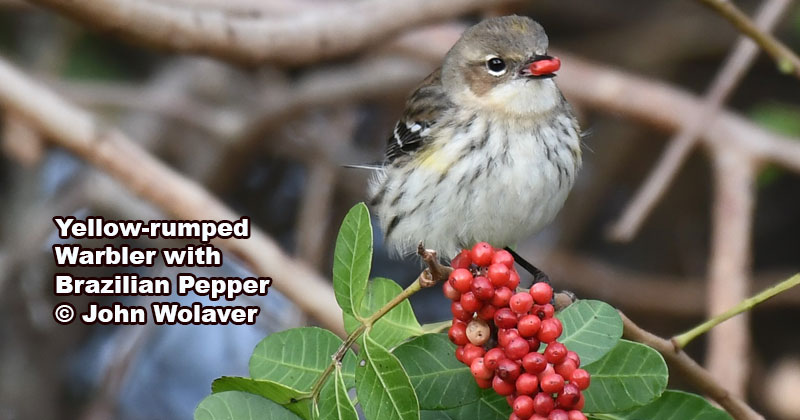| The President’s Hoot by Richard H. Baker, Ph.D. January 2022 |
The top tree species for saving our environment are given in an article published in December 2021 entitled “A simple tree planting framework to improve climate, air pollution, health, and urban heat in vulnerable locations using non-traditional partners” https://nph.onlinelibrary.wiley.com/doi/10.1002/ppp3.10245. It recommends the top 17 native trees for planting in the Houston area, which has a climate similar to ours. Those trees will help fight climate changes by sequestering carbon dioxide, absorbing other air pollutants, slowing water runoff to reduce flooding, reducing urban heat-island effects and protecting human health by providing shade. The top tree was our Southern Live Oak, the same tree we at PIAS are giving away free! The oak was followed by the American sycamore, river birch, slippery elm, tuliptree, and water oak, red maple, sweetgum, black walnut, laurel oak, American elm, boxelder, green ash, willow oak, white ash, black cherry, and loblolly pine, in that order. Oak trees support over 4,000 different species of insects and animals, more than any other tree (Douglas Tallamy, Bringing Nature Home, 2007). In Indian River County, 395 species of butterfly and moth caterpillars use Southern Live Oaks as food and protective shelter (http://nwf.org/NativePlantFinder/Plants/2804).
The authors emphasized that we must educate our health-care professionals about the connection between climate change and health (e.g., cardiac arrest and asthma attacks). The land around Cleveland Clinic hospital and the surrounding medical areas in Vero Beach is ripe for some trees to be planted in vacant fields. When you go to your doctor, ask him/her to plant some trees. PIAS is happy to help them with this effort. Dr. Hadi Shalhoub, Vascular & General Surgeon, is a PIAS board member who volunteers with growing native trees and plants in our Audubon House nursery, and will be planting them around his office off U.S. Highway 1 in Sebastian.
Unfortunately, some trees and plants introduced into Florida are very bad for our environment. Of the more than 4,000 plant species in Florida, 1,300+ are non-native. Over 225 are invasive pest plants imported as ornamental plants; many continue to be sold! Not all non-natives are harmful because, for example, many of our food plants are not native to North America. Some are non-invasive, but others clog our waterways, disrupt agriculture, and invade and crowd out native plants that nurture native insects, pollinators, and birds in our environment.
Invasive plants are costly. Please see a pamphlet prepared jointly by PIAS, FL Invasive Species Council, FL. Native Plant Society Eugenia Chapter, Friends of the St. Sebastian River, and the Environmental Learning Center. It includes photos and facts about the invasive plants of East Central Florida that we all should know and be able to identify. Florida taxpayers spend $30 million to control invasive plants in waterways and natural areas. Florida agricultural production loses $558 million and spends $100 million on fields and pastures per year. We all can help reduce that expense by taking a few steps.
Remove these major exotic invasive trees: Brazilian pepper (see photos by John Wolavar spread by birds), Australian pine, melaleuca, and carrotwood. Additionally, we must remove these invasive exotics: air potato, rosary pea, cogongrass, Mexican petunia, shoebutton ardisia, Old World climbing fern, wedelia, caesarweed, and twoleaf nightshade.
A special shout out to Dr. Carey Minter and staff at UF/IFAS Indian River Research and Education Center who have developed “biocontrol agents” for the air potato. They are now developing them for Brazilian pepper, probably our most aggressive shrub/small tree that occupies over 700,000 acres in Florida. They have released a beetle that eats only the leaves of the air potato and are now working on a small thrip that attacks the leaves of the Brazilian pepper. Both insects are very specialized, feeding only on these particular plants and not Florida natives.
Remove these invasive plants from our landscapes and replace them with native plants, some of which are available at our Audubon House nursery: https://pelicanislandaudubon.org/home-page/trees-for-life-plants-for-birds/ Live Oaks and bald cypress are free! Others are only $5 for a 1-gallon pot.
We need city and county ordinances that require the removal and prohibition of sale of all these exotic invasive plants. Removal can be done by the landowner, by pest-control specialists or possibly landscape-maintenance companies trained in the careful use of certain herbicides.
So, let’s plant native trees and plants and remove invasive trees and plants. That should include most of our turfgrass that requires 60% of our drinking water, much use of fertilizer, and other harmful chemicals that pollute our waterways Let’s give the land maintenance folks new opportunities to remove the sod and invasives and plant native trees and plants. That will help our pollinators, wildlife and fisheries and contribute to a healthy planet.

